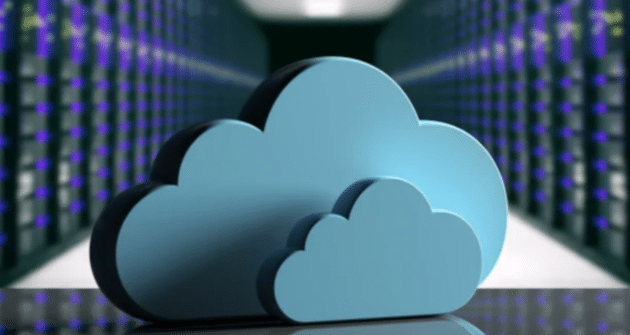Cloud Server Pricing – The adoption of cloud servers has revolutionized how businesses manage and store their data. However, understanding cloud server pricing is one of the most crucial aspects to consider when transitioning to cloud computing. This article delves into the components, factors, and strategies surrounding cloud server pricing, helping you make informed decisions that align with your organization’s needs and budget.

What Is a Cloud Server?
Before diving into pricing, it’s essential to understand what a cloud server is. A cloud server is a virtual server hosted in a cloud computing environment, providing on-demand access to computing resources. Unlike traditional servers, which require physical hardware, cloud servers leverage virtualization technology, allowing businesses to scale resources as needed.
Key Components of Cloud Server Pricing
Cloud server pricing is not a one-size-fits-all solution. Providers like Amazon Web Services (AWS), Microsoft Azure, and Google Cloud Platform (GCP) offer flexible pricing models tailored to diverse business needs. The primary components of cloud server pricing include:
- Compute Costs
- Compute refers to the processing power required to run applications. Pricing is often based on the type of virtual machines (VMs) or instances chosen, which vary in CPU, RAM, and storage.
- Example: AWS EC2 instances are charged based on their instance type and usage time.
- Storage Costs
- Cloud storage pricing depends on the volume and type of storage (e.g., block, object, or file storage). Providers also charge for data retrieval and transfer.
- Example: Amazon S3 charges for data stored per GB, with additional costs for accessing and transferring data.
- Data Transfer Fees
Ingress (data moving into the cloud) is often free, while egress (data moving out) incurs charges. Data transfer fees can significantly impact total costs, especially for businesses with high bandwidth requirements.
- Additional Services
Providers offer additional services like databases, AI tools, security enhancements, and content delivery networks (CDNs). These are charged separately and can vary widely.
Factors Influencing Cloud Server Pricing
Understanding what influences cloud server pricing helps businesses better predict and control their expenses. Key factors include:
- Usage Patterns
- On-demand pricing allows users to pay for resources as they go, suitable for unpredictable workloads.
- Reserved instances provide discounts for committing to a specific resource usage for a set period.
- Spot instances offer even more significant discounts by leveraging unused resources but come with the risk of being interrupted.
- Geographic Location
Data center location can affect costs due to variations in operational expenses, such as electricity and cooling. Regions with higher demand or limited availability may have higher prices.
- Performance Requirements
High-performance workloads require instances with powerful CPUs, GPUs, and extensive RAM, resulting in higher costs.
- Service Tier
Different service levels, such as basic, standard, and premium, have varying pricing structures and performance guarantees.
- Compliance and Security Needs
Enhanced security and compliance features (e.g., HIPAA or GDPR compliance) may involve additional costs.
Comparing Pricing Models Across Providers
Let’s examine how leading cloud providers approach pricing:
Amazon Web Services (AWS)
- Model: Pay-as-you-go, reserved instances, and savings plans.
- Key Features: Flexible instance types, cost calculators, and tiered storage pricing.
- Example Cost: A general-purpose t2.micro instance costs approximately $0.0116 per hour.
Microsoft Azure
- Model: Pay-as-you-go, reserved virtual machines, and hybrid benefits.
- Key Features: Hybrid integrations and region-specific pricing.
- Example Cost: B1S VM costs around $0.008 per hour.
Google Cloud Platform (GCP)
- Model: Sustained use discounts, committed use contracts, and pay-as-you-go.
- Key Features: Automated discounts and pricing calculators.
- Example Cost: An e2-micro instance is free within certain usage limits for eligible customers.
Tips for Optimizing Cloud Server Costs
Managing cloud server costs effectively requires careful planning and monitoring. Here are some strategies:
- Leverage Free Tiers
Many providers offer free tiers with limited resources, allowing businesses to test services before committing.
- Monitor Usage
Use tools like AWS Cost Explorer or Azure Cost Management to track resource usage and optimize spending.
- Right-Sizing Instances
Regularly evaluate workload requirements and select instances that match your performance needs without overprovisioning.
- Utilize Reserved Instances
Commit to long-term plans for predictable workloads to maximize significant cost savings.
- Adopt Multi-Cloud Strategies
Diversify between providers to capitalize on competitive pricing and avoid vendor lock-in.
Challenges in Cloud Server Pricing
While flexible, cloud server pricing can be complex and challenging to navigate. Common issues include:
- Unpredictable Costs
Variable pricing models and unexpected data transfer fees can lead to budgeting difficulties.
- Hidden Fees
Costs associated with data retrieval, premium support, and other add-ons may not be immediately apparent.
- Overprovisioning
Allocating more resources than needed results in unnecessary expenses.
The Future of Cloud Server Pricing
Providers will likely introduce more competitive and transparent pricing models as the cloud computing market grows. Emerging trends include:
- Usage-Based Billing
More granular billing models that reflect real-time usage patterns.
- AI-Powered Cost Optimization
AI tools to automatically suggest and implement cost-saving measures.
- Sustainability Discounts
Discounts for businesses opting for greener, more energy-efficient cloud solutions.
Conclusion
Cloud server pricing is a multifaceted topic requiring thorough understanding and strategic planning. Businesses can maximize the value of their cloud investments by analyzing the key components, understanding influencing factors, and leveraging cost-optimization strategies. Whether you’re a startup or a large enterprise, a well-planned approach to cloud server pricing ensures scalability, efficiency, and cost-effectiveness.

